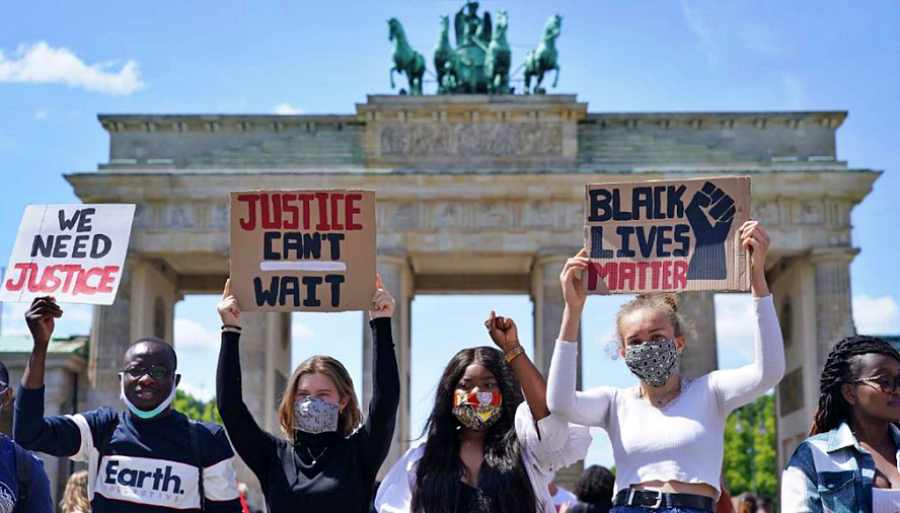Fri 02 August 2024:
Many recent movements, including Black Lives Matter and Occupy Wall Street, started out strong but often didn’t lead to lasting changes. Here’s why.
The 21st century has been a time of immense global protest.
With the Green Movement in 2009, Iran saw its biggest protests since the 1979 revolution, as thousands of people rose up to demand more honest elections.
In the Middle East, we saw the Arab Spring in 2011 topple authoritarian states. In 2014, the “Umbrella Movement” pushed back against the Hong Kong government to demand transparency and democracy.
The United States has also been home to some major recent movements, such as Occupy Wall Street and Black Lives Matter, which changed the way we think about inequality and racism. In recent months, students across the US have gathered to protest the war on Gaza.
Did it matter? Did activism result in new policies that made the world a better place? The answer is mixed.
Mixed results
There are definitely movements that achieved their highest aspirations. The Arab Spring fundamentally changed politics in some nations.
Protests ended President Ben Ali’s government in Tunisia, as well as the tenure of two Egyptian prime ministers. At the other extreme, movements appeared more fleeting.
In the US, the Occupy Wall Street movement dominated headlines for years, but that did not mitigate economic inequality, nor did the movement prevent the rise of nationalist politics in the US.
The modern “social media” movement is less likely to possess the resources and stability that is needed for sustained struggle and durable political victories.
It seems that many movements in recent years have gone the way of Occupy Wall Street. They are more likely to resemble Occupy Wall Street than the Arab Spring that toppled Ben Ali. They came, they made a point, and then they faded.
__________________________________________________________________________

https://whatsapp.com/channel/0029VaAtNxX8fewmiFmN7N22
__________________________________________________________________________
The power of past protests
The reason is that today’s protests are quite different than they were in generations past. Traditionally, movements tried to make an impact by appealing to a large group of people and then use that support to create social and political organisations that fight for change within government.
Today, social movements are more likely to be the outgrowth of online chatter and small groups of digital activists. The modern “social media” movement is less likely to possess the resources and stability that is needed for sustained struggle and durable political victories.
Take the American Civil Rights movement as an example. Some historians say that the earliest Civil Rights groups defended Black rights in the period after the Civil War, when southern states imposed brutal regimes of racial segregation. They also point to the birth of the National Association for Advancement of Colored people in 1909.
#OnThisDay 60 years ago, the landmark civil rights and labor law, the Civil Rights Act of 1964, which prohibits discrimination based on race, color, sex, or national origin, was signed into law by President Lyndon B. Johnson. pic.twitter.com/f7hkwNaqW5
— NatCivilRightsMuseum (@NCRMuseum) July 2, 2024
Others might credit the generation of Martin Luther King, Jr and Bayard Rustin in the 1950s and 1960s. Regardless of how we look at the Civil Rights movement, we recognise a large community came together to create political organisations that were able to stage protests, lobby the government, and file lawsuits.
The NAACP collected millions of dollars from its supporters, opened hundreds of branches, and relentlessly fought segregation in the courts. It is easy to understand how decades of effort yielded massive victories like the 1964 Civil Rights Act, which ended legalised racism in the United States.
Comparing to the present
We can compare the Civil Rights movement of the past with today’s most well known movement for racial justice, Black Lives Matter. Founded in 2014, BLM became a rallying cry for anti-racism in the United States.
After George Floyd’s murder at the hands of police officers in 2020, BLM organisers rallied millions of people to oppose police violence and anti-Black racism. Unlike prior Civil Rights movements, BLM was not led by a large coalition of Black citizens and their White allies.
a new study in Social Problems documents evidence of backlash to BLM, in terms of increased funding for police departments in Republican cities. https://t.co/jnnbBRzKve
— Brayden King (@braydenk) March 19, 2024
Rather, BLM emerged from Twitter. Three activists, Alicia Garza, Patrisse Cullors, and Opal Tometi, coined the term “Black Lives Matter” in online spaces and the murder of Black Americans citizens, such as Michael Brown and Sandra Bland, brought this small group of activists a great deal of attention.
Once BLM gained popularity, local branches were created, but they were small and they were not operated as legal advocacy groups or registered lobbying organisations.

Not surprisingly, scholars have come to understand that BLM’s impact has mainly been cultural. With my scholarly collaborators, I published an article in the Proceedings of the National Academy of Sciences that showed that discussions of antiracism increased after waves of BLM protest.
In contrast, scholars have noted that BLM protests did not lead to decreased funding for police. An analysis by Mathis Ebbinghaus, Nathan Bailey, and Jacob Rubel published in the sociology journal Social Problems showed that many cities actually saw an increase in police budgets, which they interpret as a sign of backlash.
We can ask if a similar dynamic is happening today in the United States, and other nations, where people have protested the war in Gaza. Like BLM, these protests spread quickly because they were amplified by social media, and it is hard to see how their actions have changed government policy.
I suspect that the movement’s limited impact may be ascribed to the fact that it lacks a centralised leadership that mobilises money and votes in support of their cause and relies on the energy of social media.
The Gaza protests have also become enmeshed in domestic US politics as they have been sidetracked by claims of anti-Semitism on college campuses and administrative crackdowns on student and faculty activists.
Sadly, there is not enough discussion of the humanitarian crisis emerging from the war.
Falling short
BLM is not an isolated case. There have now been many movements in the 21st century, such as the Arab Spring or the Green Movement in Iran, that began as hopeful ideas on the internet and caught fire in social media.
The future of protest depends on how well activists can respond to this rapidly changing environment and innovate new strategies.
These movements were powerful, and they inspired millions. But they often fell far short of what their most optimistic supporters imagined. A major reason is that people overestimate social media and underestimate the need for organisation and long term strategy.
Twitter may help you instantly reach a million people and call them out to a protest for a day, but it’s not the tool for building a community of people who will do the thankless work of lobbying Congress, registering voters, and getting things done in the long run.
As time passes, and we assess the legacy of these movements, we can appreciate their victories and work to remedy their weaknesses.
We can seek to understand the instability of movements based on social and we can also seek to understand how governments respond to this kind of protest.
The Iranian government, for example, has continued to disrupt internet-based movements by increasing their investment in digital surveillance. The future of protest depends on how well activists can respond to this rapidly changing environment and innovate new strategies.
The statements, views and opinions expressed in this column are solely those of the author and do not necessarily represent those of Independent Press.
Author:

______________________________________________________________
FOLLOW INDEPENDENT PRESS:
WhatsApp CHANNEL
https://whatsapp.com/channel/0029VaAtNxX8fewmiFmN7N22
![]()
TWITTER (CLICK HERE)
https://twitter.com/IpIndependent
FACEBOOK (CLICK HERE)
https://web.facebook.com/ipindependent
YOUTUBE (CLICK HERE)
https://www.youtube.com/@ipindependent
Think your friends would be interested? Share this story!





